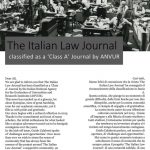The words used in different legal systems are not only terms used to denote meanings; they also have a deeper significance that relates to the inherent differences in the systems. This is relevant even to such seemingly innocuous terms such as the word “victim.” When translating, the cultural gaps should always be considered, not to mention the fact that an understanding of both legal systems is required.
In Italy, offences, “reati”, are classified in two main groups, the “delitti” and “contravvenzioni” depending upon the sort of punishment that the Italian Criminal Code will impose. Offences are also classified in relation to the right to take legal action. The “reati perseguibili d’ufficio” allow for legal action upon theItalian judicial authority having bene informed of the crime, while in the “reati perseguibili a querela”, police will be authorised to prosecute only once it has been reported by the victim himself.
This classification of offences is in stark contrast to the English legal system, where offences are divided into the legal source, this being the difference between a statutory and a common-law offence. Offences are also divided into those for which an offender may be arrested, and those for which he cannot. Then, there are different levels of offences as regards trial, these being summary offences which the lower courts deal with, whilst juries try indictable offences. There are also offences that are triable-either way.
However, whilst a knowledge and understanding of the different legal systems is certainly crucial, this is often not sufficient to bridge the cultural gap. There is a requirement for translators to carefully evaluate a phrase and choose the most appropriate term. There are problems to be faced; for example, there may textual variations within the same text and these may well be necessary. In the English version of a text, for example, the same term may occur numerous times without changing, but in the Italian version there may be a number of modifications of a term although all variants mean essentially the same thing. Examples of this can be found in the term used for “victim” in the European Union Green Paper on Compensation to Crime Victims.
Whilst the English version uses the term “victims” throughout, the Italian version of the paper uses, variously, risarcimento da parte dello Stato alle vittime di reati, risarcimento da parte dello Stato delle vittime di reati, risarcimento statale delle vittime di reati, risarcimento da parte dello Stato alle vittime di reato and risarcimento delle vittime di reati da parte dello Stato.
There are evidently difficulties faced by translators in completing the translation of a legal text, and the problems to be overcome are not only terminological, but also relate to linguistics and conceptual issues. This is just one aspect of the edifying challenge of legal translation.







Leave a Reply
You must be logged in to post a comment.